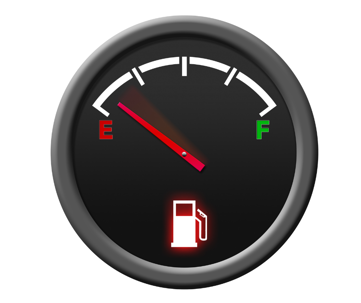If treated correctly, your vehicle’s fuel pump should last the entire life of the vehicle. To protect the lifespan of your fuel pump, auto experts recommend not allowing your gasoline level to fall below a quarter tank. But why is this the generally accepted rule?
Besides making sure that you don’t run out of gas and become stranded somewhere, not allowing your gas tank to completely empty will help maintain the integrity of your car. Driving on empty can possibly damage important vehicle components, leading to hefty repair costs. Here are some issues that can potentially result from driving on an empty gas tank.
Your vehicle will stall.
Without gasoline in your tank, your vehicle cannot run and will eventually not turn on. Gas is food for your car!
Your vehicle’s fuel filter will clog.
As your vehicle runs, it collects debris and dirt off of the road that settles at the bottom of the tank. This can become a problem when the vehicle runs low on gas and debris is sucked into the gas pump, clogging the filter. When this happens, the flow of gas into the engine is blocked.
Your fuel pump gets damaged.
In a vehicle that is running properly, the fuel pump propels gas to the engine. If a car runs extremely low or out of gas, the pump can overheat. This costly scenario may require draining the entire gas tank and removing it to replace the damaged pump.
Your engine may misfire.
When your vehicle runs out of gas, the fuel pump will begin to suck in air, leading to misfires. When a vehicle misfires, the engine will sometimes vibrate, hesitate, or stall. It’s important to note that when your vehicle misfires, worse complications may arise down the line.
To protect yourself and your vehicle, keep an eye on your fuel indicator and fill up before your tank reaches “E”!

